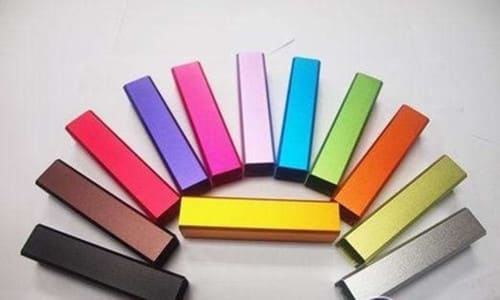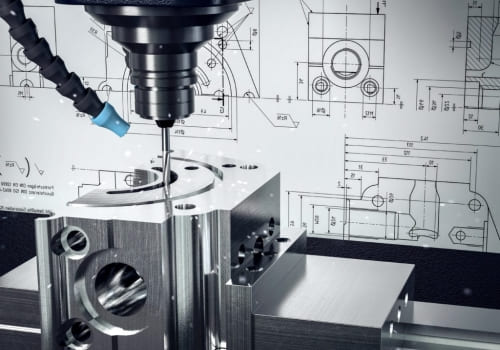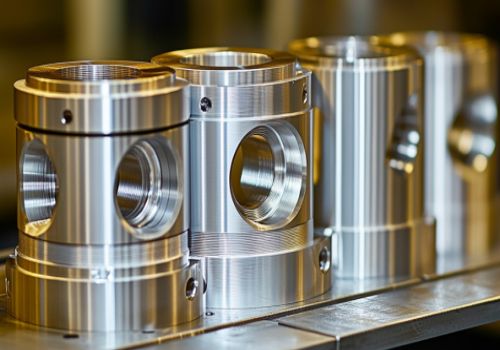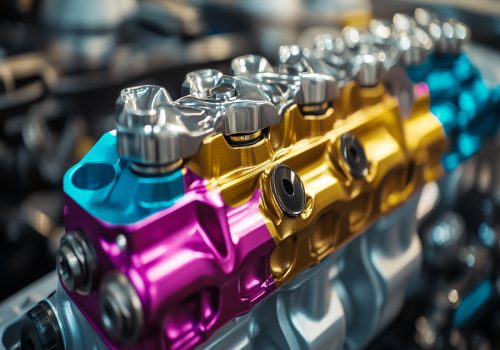The acceptance of blank parts and the verification of technical requirements are an important work content before aluminum parts undergo anodizing or chemical conversion treatment. Through this work, it is possible to find out the processing varieties and technical requirements required by the blank parts, and to judge whether it meets the corresponding processing quality and other complete process technical requirements.
In the acceptance, if it is found that the processing requirements are not clear enough or the quality of the blank parts is not conducive to the normal formation of oxide film, etc., you can contact and consult with the design and machining process personnel in advance to propose improvement measures to ensure that a good oxide film is obtained.
Acceptance of blank parts:
1. Why should the blank parts be checked and accepted?
The purpose of the acceptance of the blank parts is mainly to detect the parts that do not meet the anodic oxidation or chemical conversion processing in advance, so as to avoid repairing or even scrapping afterwards.
2. Why should we check whether the blankparts go through all the machining processes?
Incidents in which the machining process is not completed are particularly common in aluminum parts. The reason is mostly caused by the improper arrangement of the original industrial regulations and the omission of temporary changes in the machining process. This phenomenon is difficult to find if you do not observe carefully in the acceptance of blank parts.
If it is discovered during anodizing processing or after the finished product, it is too late and must be repaired. We have to remove the originally formed oxide film, and mechanical processing to make up the missing process then re-anodize. After this repetition, it will not only affect the processing progress, but also affect the product quality.
In order to avoid the occurrence of the above phenomenon, it is necessary to carefully check each batch of blank parts, and if it is found that the process has not been completed, the blank parts should be returned, which is one of the keys to ensuring quality.
3. Why can’t there be burrs or flash on the surface of the blank parts?
If machined blank parts have burrs and flash, anodization treatment should not be carried out directly, because the oxide film layer is brittle, and the oxide film on the surface of the burr is easy to break off and fall off. The end face of the burr breaks exposes the substrate, and there is no oxide film. It is easy to be corroded due to the protection of anodic oxidation, and the dyed parts after anodization will show white spots, which will affect the appearance quality.
Anodized parts are not allowed to be repaired repeatedly, otherwise it is very likely to cause scrap, especially those with through screw holes (blind holes have little effect). After repeated removal and anodization, the screw hole will enlarge and affect the assembly.
For hard anodized parts, not only is it not allowed to have burrs, but the corners need to be chamfered. Only in this way can the quality of hard anodization be guaranteed.
4. Why avoid different metal combinations in the blank parts?
If the assembled aluminum blank parts also has copper, iron and other metals, the assembly will be corroded during anodization, which will cause the parts to be scrapped and contaminate the solution.
It is also very difficult to protect this kind of heterogeneous metal with insulating glue. If the reliability of the insulating glue is poor, it is very likely to be broken down during anodization, so that the surrounding aluminum surface is contaminated by the insulating glue and affects the formation of the oxide film there.
In view of this, this kind of assembled blank parts should be returned, and after being disassembled mechanically, they should be treated with their own protection, and then assembled and combined.
5. How to deal with the blank parts that made by two grades of aluminum?
For the general anodizing process, aluminum parts composed of different grades can still be anodized normally, but the appearance of the obtained film will vary with the different grades. If it is a decorative item, it must be explained to the relevant personnel in advance and corrected in advance if necessary.
Two-color or three-color oxide film will appear after this kind of workpiece is anodized. For this reason, the requirements should be put forward in the design, and the same grade of materials should be used during machining, so that the above phenomenon can be avoided.
6. What should do if the blank part is leaking?
When the blank part is immersed in the water, if bubbles are found in the welding place, it should be returned and re-welded until there are no more bubbles in the water before the conversion coating or anodizing treatment can be carried out. Otherwise, all solutions will be polluted in the process of oxidation treatment, and the quality of the oxide film generated is difficult to ensure.
7. What should do if the blank part has no clamping area?
For anodizing, the following requirements can be made for the blank parts without clamping area according to the actual situation, reduce the appearance quality standard, allow the resulting insignificant impression, or drill a process hole in the hidden part to facilitate the insertion of the fixture.
Another type of situation is thin workpieces, such as aluminum foil thinner than 0.5mm. This kind of thin workpiece is difficult to clamp and is easy to deform. However, it is recommended to add “fixture ears” to solve this problem, that is, on the edge of the blank part, a section of aluminum foil for the fixture is connected for the fixture. Since the fixture does not directly contact the blank part, the blank part will not be damaged. The area of the contact point between the “fixture ear” and the blank part is as small as possible, as long as the current can be conducted, it can be cut with scissors after anodizing. Since the sectional area of the connection point is very small, it will not have a great impact on the protection performance of the blank part after anodizing.
8. The blank part has been sandblasted but it is not uniform enough, what should do?
The purpose of sandblasting is to remove the surface defects of the blank parts and present a uniform matte sand surface. If the sandblasting surface is sprayed unevenly, it will become uglier than the original natural appearance, especially after anodizing, this phenomenon will become more obvious. Therefore, if you see uneven blasting of the blank parts, you should advise the relevant personnel to re-blast.
9. How to repair the blank parts that have been anodized?
For the blank parts that have been anodized, the reason for the repair is usually that the trial assembly is not carried out before the anodization, resulting in improper size matching after the anodization, and the assembly cannot be assembled. Therefore, for workpieces that require re-anodization after correction, when this happens, the machining technicians should add trial assembly procedures before switching to the anodization process, and unload them for anodization treatment after the trial assembly is suitable.
When anodizing workers receive this kind of blank parts, they need to be careful. They should pay attention to the area of the part that has an oxide film, and some other areas’ oxide film has been cut off during re-machining, and the substrate has been exposed. During the process, this area can easily cause excessive corrosion. To avoid this phenomenon, the following two suggestions are proposed:
(1) Mechanical processing after removing the anodic oxide film.
For the blank parts that have been anodized and need to be re-processed, the original oxide film should be removed first, and then additional mechanical processing, which can prevent excessive corrosion during re-anodization.
(2) Removal requirements that have been partially machined.
In order to avoid excessive corrosion to the processed parts during film removal, it is recommended that the film removal be changed from alkaline to acidic formula. The formula and process conditions are as follows:
Phosphoric acid: (H3P04, d=1.7) 3.5mL/L, Chromic anhydride: (CrOs) 209/L, Solution temperature: 80~90℃, Removal time: until remove completely.
CNC technology is of great significance in industrial production, mechanical equipment production, automobile manufacturing and other fields. It can not only improve the production efficiency of mechanical manufacturing, but also ensure the quality of the produced products.
As a professional CNC machining manufacturer, DO Machining not only produce metal parts, but plastic and wood parts are also available.
Please visit our CAPABILITIES and what PRODUCTS we did.
CNC machining service is the core business of DO Machining, from protptyes to bulk production, our professional 3/4/5 aixs CNC machining centers, CNC turning equipments, CNC turning-milling equipments, CNC grinding machines etc., are operated by well trained manufacturing engineers to meet the demands from global 1000+ customers in 30+ industries.
CNC Machining can be done starting with blanks produced from standard bar stock or one of DO Machining other manufacturing processes.
Contact us to see how we can provide overall value to your CNC machining needs.










